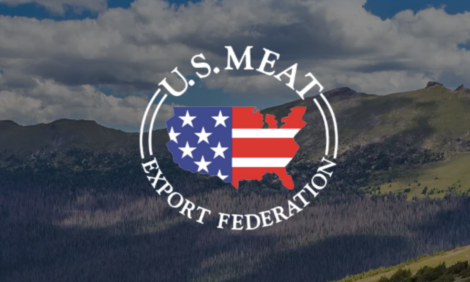



Genetic Influence on Beef Quality
US - Genetic change in the cattle business is a slow and steady process, but evidence shows it’s happening, and that it’s positive for beef quality. Recent research written by Certified Angus Beef LLC says: “Quantifying the genetic impact is difficult, but it is definitely a factor in the trend toward higher quality grade.”The paper examines the factors that have driven quality grades up, ending a 30-year decline. By this summer, 60.1 per cent of cattle in the nation’s harvest mix were grading Choice, a 7.5-percentage-point leap in just two years.
Scientists estimate 1 to 1.5 points can be directly traced to the increased use of Angus genetics, an improvement in that breed’s natural marbling ability and a boost in the number of cattle that show Angus influence. Sally Northcutt, genetic research director for the American Angus Association®, says the breed has focused on marbling.
“When you look at the genetic trend for marbling from the 1980s to now, we see about a third of a marbling score improvement,” she says. At 0.26 by mid-2009, the marbling EPD (expected progeny difference) for Angus bulls had moved up 9 points in a decade (Fig. 1), after taking 25 years to move that far since its inception.
“We’ve had a huge progression of the selection tools to allow us to place pressure on marbling,” Ms Northcutt says. The Association has more than 85,000 carcase and a million ultrasound measures to evaluate each week.
“It’s not enough with Angus breeders to just have the cattle. They like to characterise those cattle for different traits,” she says. “Marbling is definitely a key player in trait selection and breeding programmes. That funnels through to their customers.”
The Angus customer base has been steadily building, too. According to a 1995 survey, 39 per cent of all bulls used that year were Angus. By 2008, that number was 55 per cent, and 70 per cent of producers said they used at least some Angus bulls.
“The breed has inherently good quality and produces very desirable marbling genetics,” Ms Northcutt says.
Data from Iowa’s Tri-county Steer Carcase Futurity (TCSCF), which tracks breed makeup, shows the impact of selection. Barely half of the black-hided cattle with less than a quarter Angus genetics in the TCSCF database graded Choice. That’s compared to those with three-quarters Angus breeding , which went 86.2 per cent Choice and Prime. Certified Angus Brand ® (CAB®) qualifiers more than tripled as Angus makeup increased (Figure 2).
Ms Northcutt says that effect is amplified today: “We’ve moved beyond just supplying herd sires with a quality impact.” She says retaining females builds ever more Angus influence into producers’ cowherds.
From 2000 to 2008, there was a 12-point jump in the share of black-hided cattle in the US harvest mix, from 48 per cent to 60 per cent. TCSCF data helps explain the trend, showing an 18-point advantage in the percentage of Choice or higher grade from black-hided cattle compared to their non-black contemporaries.
All of that combines for a partial explanation of the beef quality grade surge.
Further Reading
| - | You can view, “Quality Grade: What is driving the recent upswing?” by clicking here. |
TheCattleSite News Desk


